Best
Value for Money Beginner Trumpet
-
Overall: Designed by the famous Vincent Bach Company
-
Best Feature: Steel valves are light, smooth, and durable
-
TedScore™: 9/10
Best
Overall Beginner Trumpet
-
Overall: Durable yellow brass construction
-
Best Feature: With an adjustable 3rd trigger ring to ensure a comfortable grip
-
TedScore™: 9/10
Best
Versatile Beginner Trumpet
-
Overall: Smaller valve block assists with gripping the trumpet
-
Best Feature: Easy-blowing lead pipe with fantastic tuning
-
TedScore™: 8/10
Hello, trumpeting trailblazers!
I’m your brass-savvy guide, a professional trumpet player who’s hit high notes from Broadway to the London Philharmonic.
Scales are the ABCs of music, and the trumpet scales finger chart?
It’s your personal alphabet soup. Stick with me, and you’ll be spelling “virtuoso” with your valves in no time.
Let’s get those scales to scale new heights!
The Trumpet: A Brief Overview
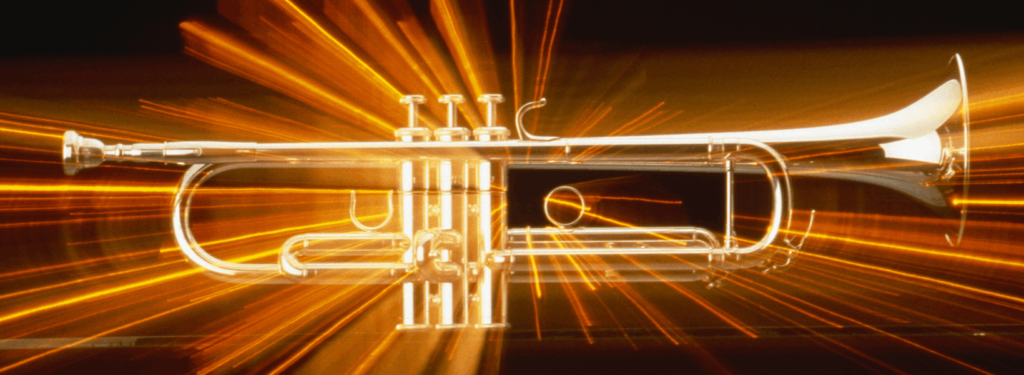
The trumpet is a brass instrument that’s been around for centuries. It’s a popular jazz, classical, and even pop music instrument.
The trumpet is a long, cylindrical tube with a flared bell at the end. The tube is divided into three sections: the mouthpiece, the lead pipe, and the main tuning slide.
The mouthpiece is where the player blows into the instrument, and the lead pipe is where the sound is generated. The main tuning slide is used to adjust the pitch of the instrument.
The trumpet has three valves that change the instrument’s pitch. When the player presses down on a valve, it redirects the air through a different length of tubing, which changes the pitch.
Each valve has a different length of tubing associated with it, so pressing down on different combinations of valves can produce a wide range of notes.
The trumpet is a versatile instrument used in various musical genres. It’s often used to play the melody in jazz and pop music and can also be used to play complex solos in classical music.
The Trumpet Fingering Chart: Your Guide to Mastering Notes
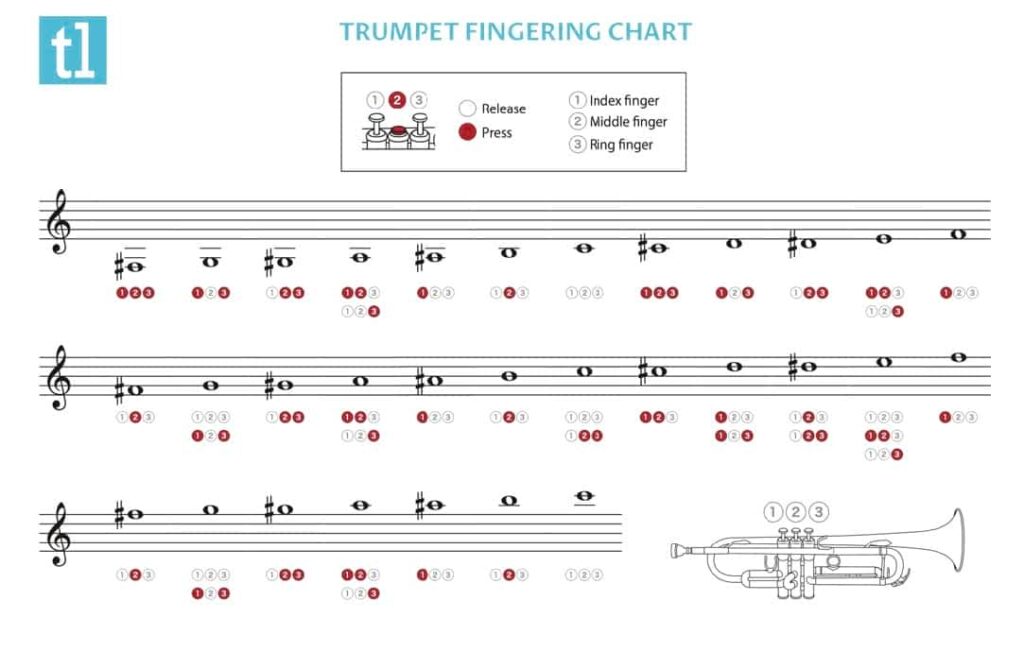
So, you’re picking up the trumpet and ready to play some sweet tunes. But before you can do that, you need to master the notes. And that’s where the trumpet fingering chart comes in.
The trumpet fingering chart is your ultimate guide to mastering the notes. It shows you which keys to press down to produce specific notes. Each valve position can produce multiple notes, so a visual reference like a fingering chart can make learning easier.
The chart is presented on a chromatic scale from low to high. The darkened circles represent the keys that should be pressed down.
Following the trumpet scales on the chart is important as you begin learning the trumpet fingering positions.
Learning and memorising the proper fingerings can be challenging, but with regular practice, it will become second nature.
Tips for Mastering the Trumpet Fingering Chart
1. Start with the basics
2. Practice regularly
3. Use a metronome
4. Experiment
Remember, mastering the trumpet fingering chart takes time and practice. Don’t get discouraged if you don’t get it right away. With patience and dedication, you’ll be playing beautiful music in no time.
Understanding Scales
Scales are a fundamental part of trumpet playing and are essential for building technique and musicianship.
First things first, what is a scale? Simply, a scale is a sequence of notes played in ascending or descending order. Scales are based on a specific key, which determines the notes played.
For example, if you’re playing a tune in the key of C major, you’ll also play notes in C, D, E, F, G, A, and B notes.
There are two main types of scales: major and minor.
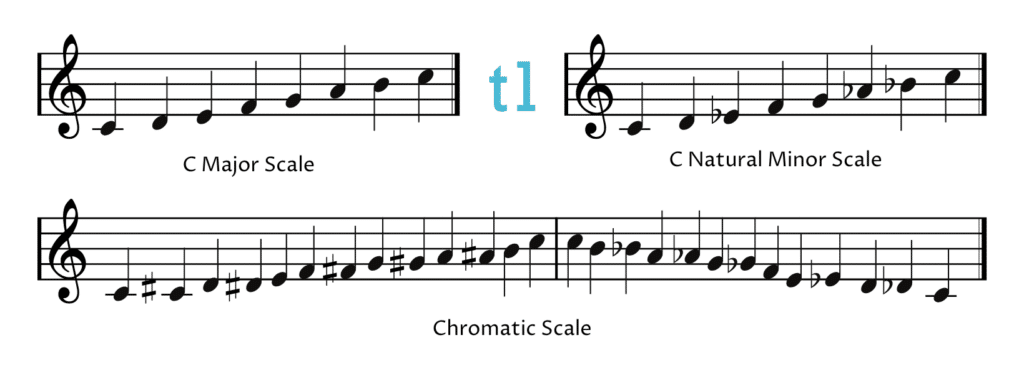
Major scales are happy and upbeat, while minor scales are sad and moody. Each major scale has a corresponding minor scale, which shares the same key signature but starts and ends on a different note.
When playing scales on the trumpet, it’s important to understand the fingerings well. A trumpet fingering chart can be useful for learning and memorising the proper fingerings for each note.
The chromatic scale is one of the most important scales for trumpet players to learn. This scale comprises all twelve notes in Western music, played in ascending or descending order. It’s a great warm-up exercise and can help build finger agility.
Decoding the Trumpet Scales
Scales are the building blocks of music, and they provide the foundation for everything you’ll play on your trumpet.
The trumpet scales consist of twelve major scales and their relative minor scales. Each scale has its unique set of notes that you need to master to play it correctly.
You need to know the correct fingerings for different note names to play each of these scales.
A trumpet scales finger chart is an essential tool for learning these fingerings. The chart shows you the correct fingerings for each note in the scale, making it easier to play the scale correctly.
The following is a list of the twelve major scales with their corresponding fingering charts:
C Major Scale Trumpet Fingering Chart
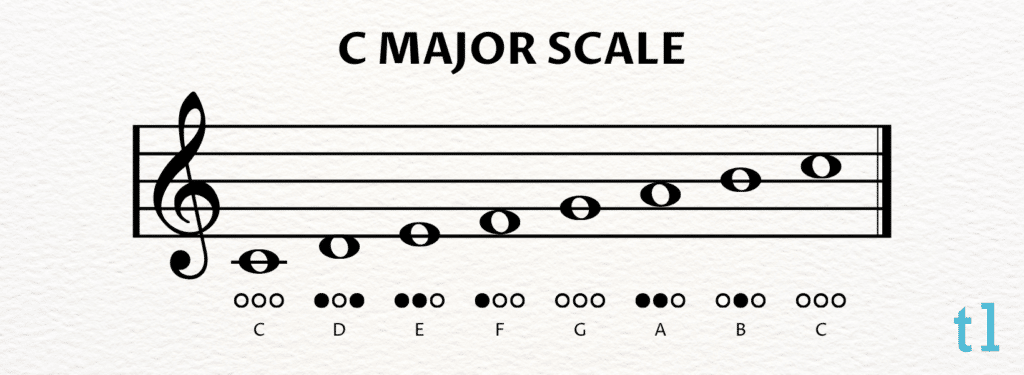
C♯ (D♭) Major Scale Trumpet Fingering Chart

D Major Scale Trumpet Fingering Chart
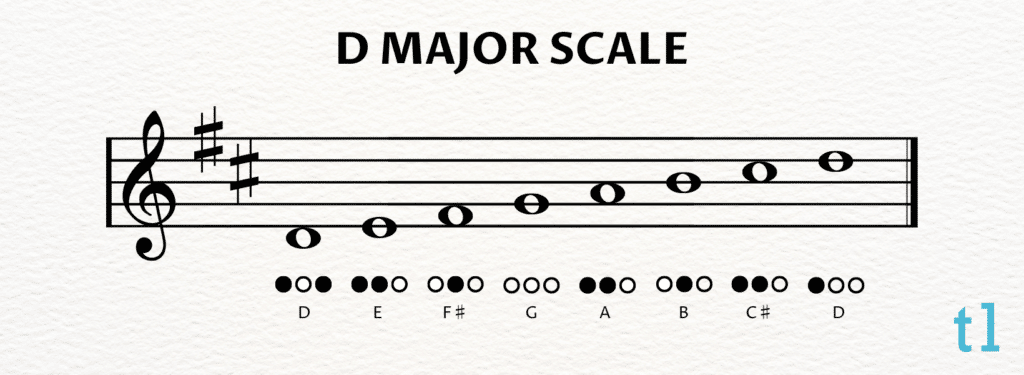
E♭ Major Scale Trumpet Fingering Chart

E Major Scale Trumpet Fingering Chart
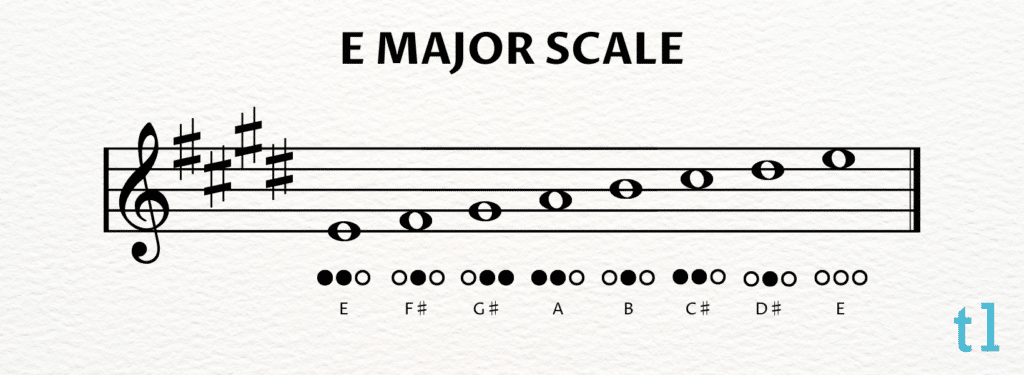
F Major Scale Trumpet Fingering Chart
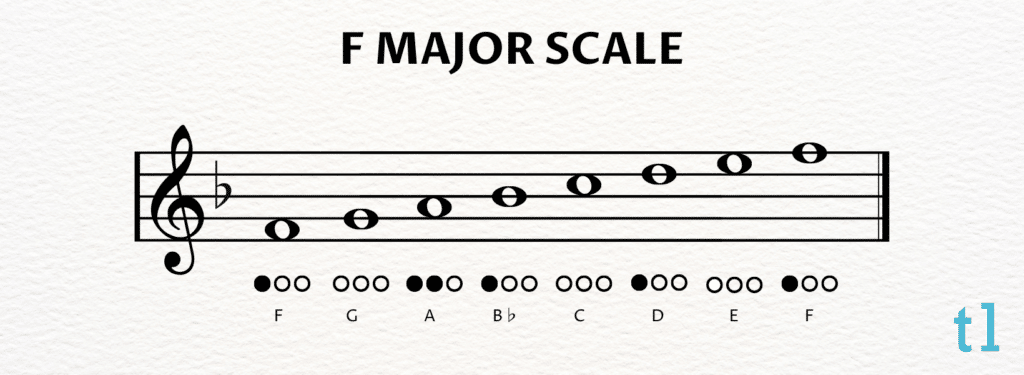
F♯ Major Scale Trumpet Fingering Chart
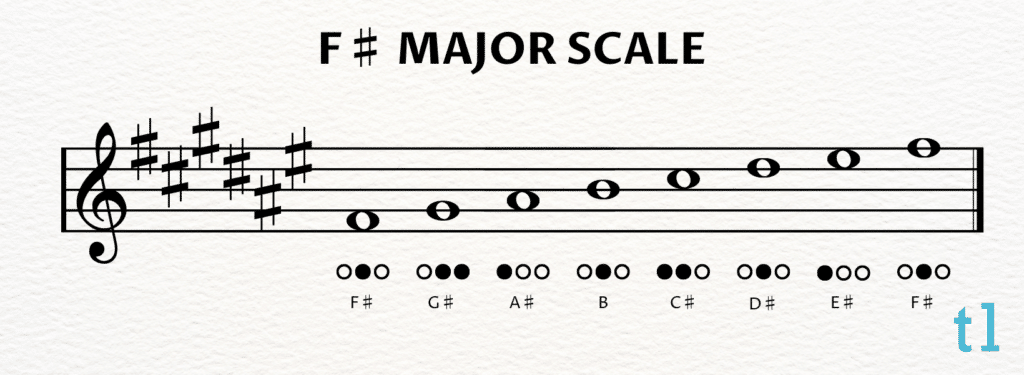
G Major Scale Trumpet Fingering Chart
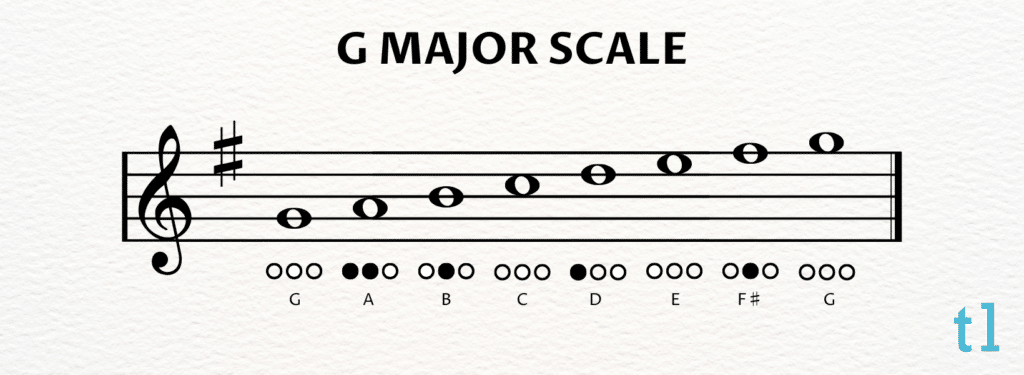
A♭ Major Scale Trumpet Fingering Chart
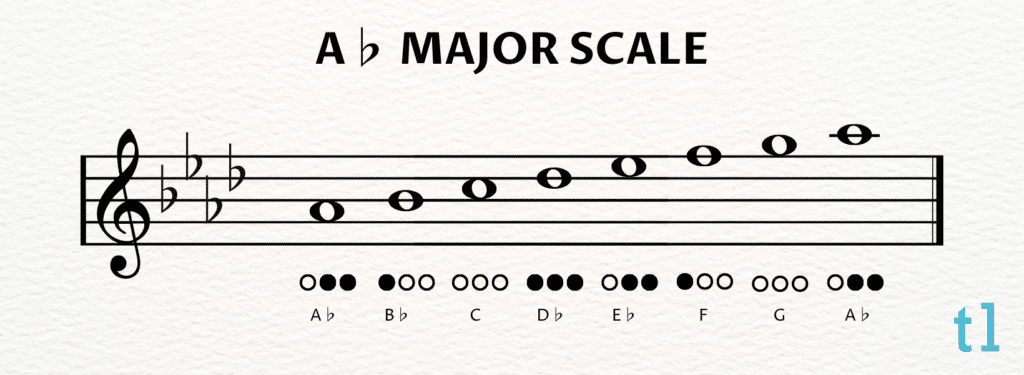
A Major Scale Trumpet Fingering Chart
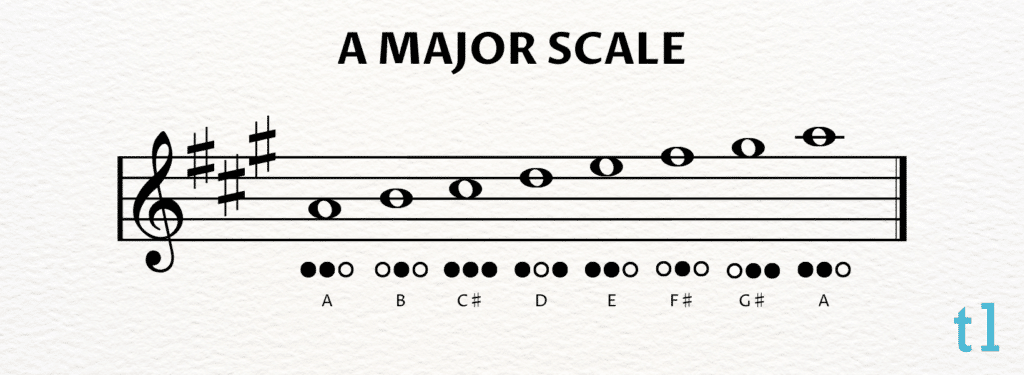
B♭ Major Scale Trumpet Fingering Chart

B Major Scale Trumpet Fingering Chart
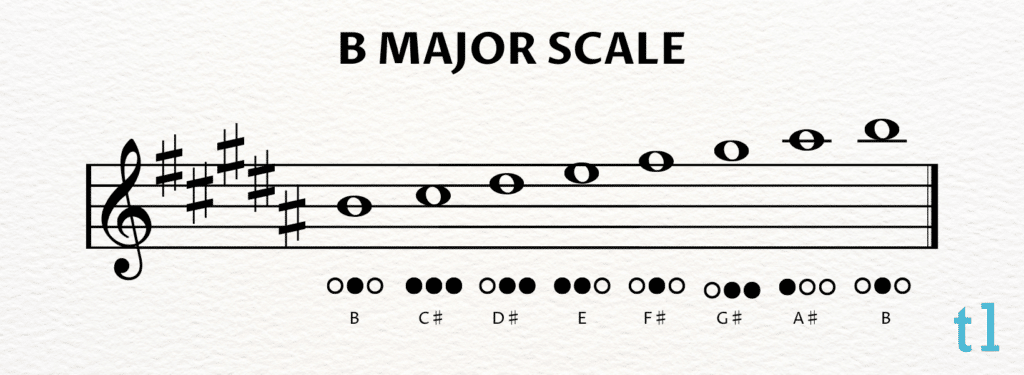
In addition to the major scales, there’s also the chromatic scale. The chromatic scale plays all the trumpet’s notes in sequence. It’s a great scale for warming up and working on finger agility.
When practising your scales, it’s important to start slowly and gradually increase the tempo as you become more comfortable with the fingerings.
You should also practice playing each note in the scale as a whole, half, and quarter note. This will help you develop your timing and rhythm on higher notes.
One thing to keep in mind is that scales are not just something you learn and then forget. You should practice your scales regularly to maintain your skills and ensure that you’re always improving.
Learning Trumpet Scales: Making It Fun
Learning trumpet scales can be daunting, but it doesn’t have to be a chore.
You can make practising scales a fun experience with creativity and a positive attitude. Here are some tips to help you learn trumpet scales while having fun:
1. Set Goals and Challenges

Setting goals and challenges for yourself can make practising scales more exciting and rewarding. For example, you could challenge yourself to learn all the major scales in a week or aim to play a particular scale at a certain speed.
Celebrate your achievements when you reach your goals, and don’t be too hard on yourself if you don’t quite make it.
2. Use Backing Tracks
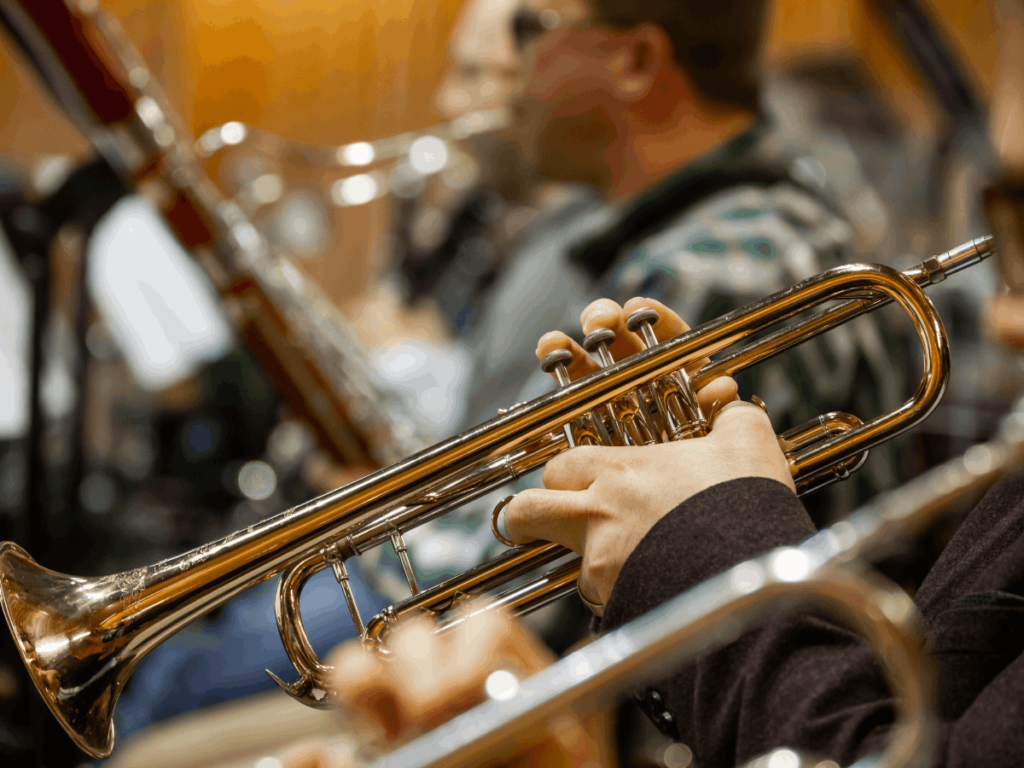
Playing with backing tracks can make practising scales more enjoyable and help you develop a sense of rhythm and timing.
You can find backing tracks online or create your own using a metronome or recording software. Experiment with different styles of music to keep things interesting.
3. Make it a Game
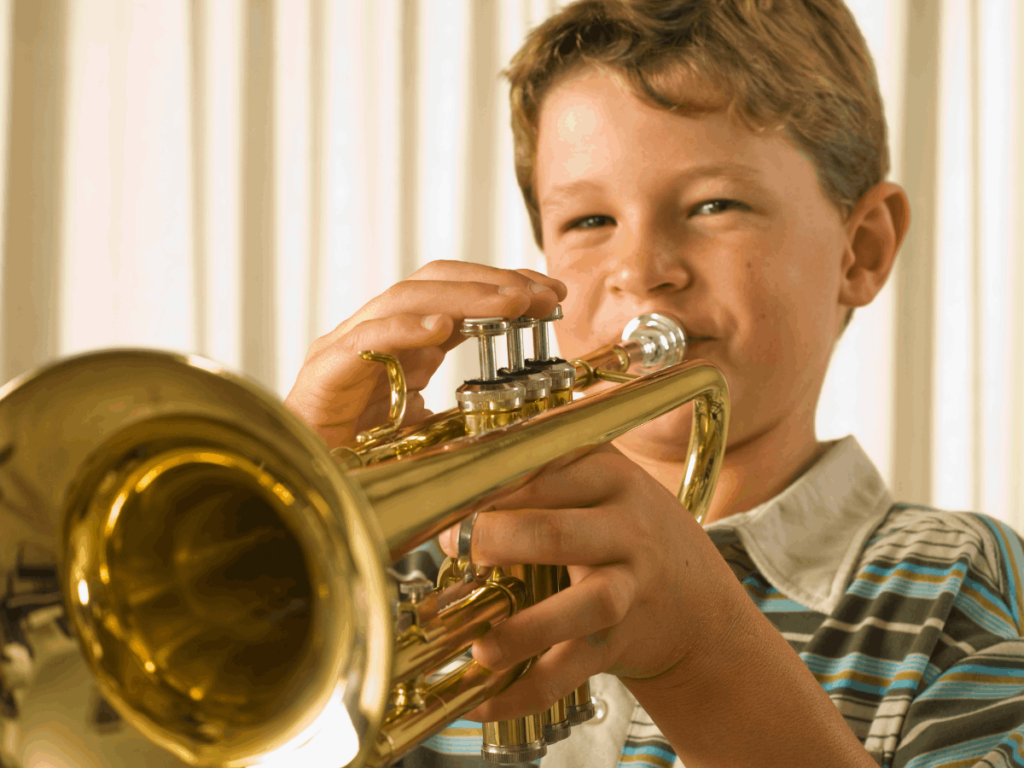
Turn practising scales into a game by challenging yourself to play a particular scale without any mistakes or seeing how many scales you can play in a minute.
You could also play a game with a friend where you take turns playing a scale and see who can play it the fastest or most accurately.
4. Mix it Up
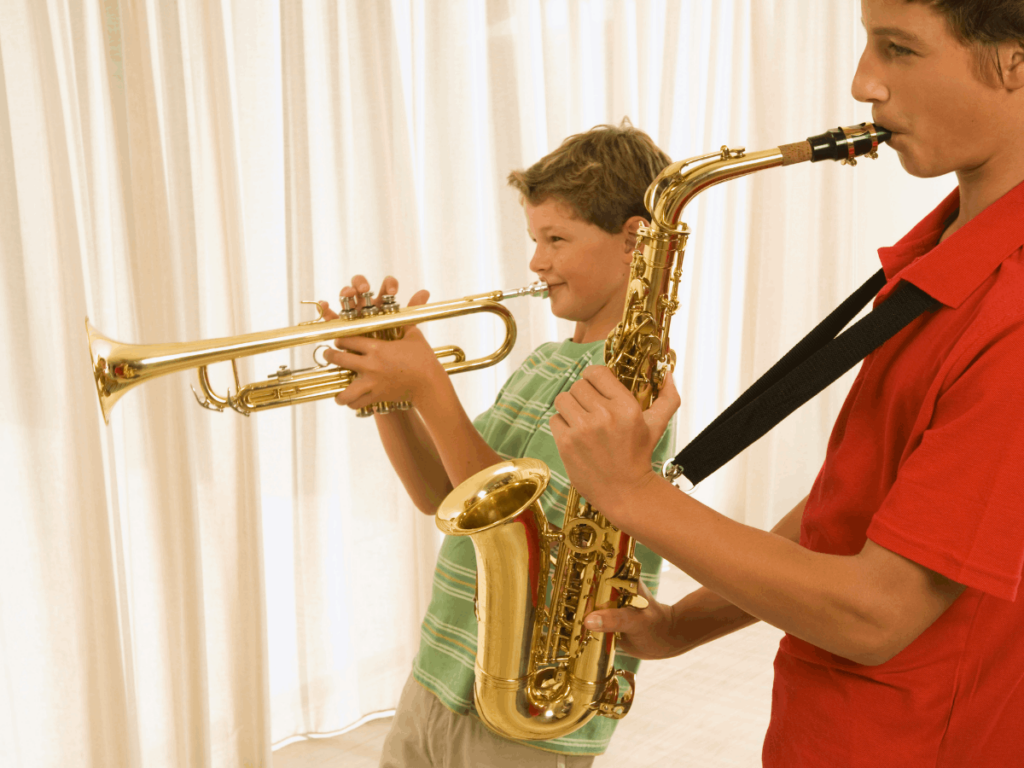
Don’t be afraid to mix things up and try new things.
Practice your scales in different keys, play them in different octaves, or experiment with different articulations. This will help you develop a more versatile and expressive playing style.
5. Have Fun!

Most importantly, remember to have fun! Learning trumpet scales can be challenging, but it can also be incredibly rewarding. Don’t get too caught up in the pressure of trying to play everything perfectly and remember to enjoy the process.
Increasing Speed and Efficiency
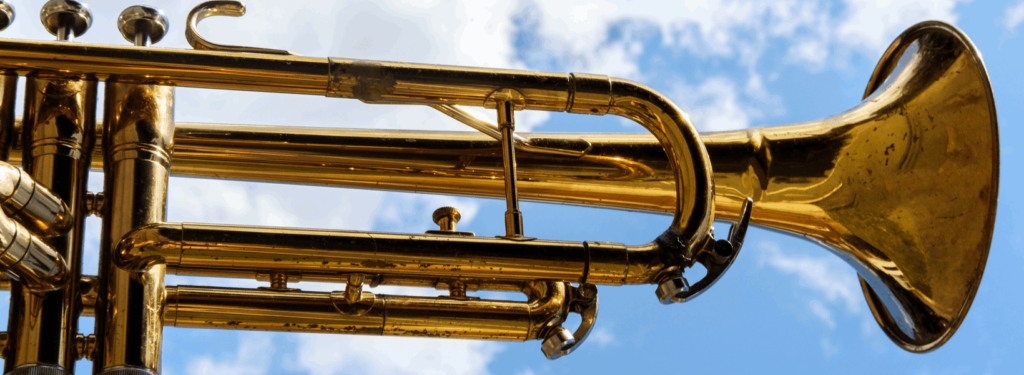
So, you’ve been practising your trumpet scales and got the fingerings down. But now you want to increase your speed and efficiency. No problem, we’ve got you covered!
First things first, make sure you’re using the proper technique. This means keeping your fingers close to the valves and using a light touch. You don’t want to be slamming your hand or fingers down on the valves, as this will slow you down and tire you out quickly.
Next, start slow and gradually increase your speed. Use a metronome to keep yourself on track. Start at a comfortable pace and gradually increase the tempo as you get more comfortable with the scale.
Another helpful tip is to practice the scales in different rhythms. This will help you develop more control and dexterity in your fingers. Try playing the scales in triplets, sixteenth notes, and other rhythms.
It’s also important to practice the scales in different keys. This will help you better understand the instrument and improve your playing ability.
Finally, make sure you’re taking breaks and not overdoing it. Practising for short periods throughout the rest of the day is better than practising for hours. Your fingers will thank you!
Recommended Trumpets for Beginners
Bach TR650 Bb Trumpet Outfit, Clear Lacquer

FEATURES: Steel valves are light, smooth, and durable
Bach TR650 Bb Trumpet Outfit, Clear Lacquer
- Made with a red-brass lead pipe, with two water keys and stainless steel valves
- Can take you right up to the conservatoire level
- Higher price range (but with outstanding quality)
When you click ‘Check Price’, you’ll see there are loads of great places to buy this item. Our personal favorite is Sweetwater for the US, and Thomann and Gear4Music for the UK & Europe.
They are the largest music retailers, with excellent customer service, competitive prices, really fast shipping, and the longest guarantees.
The professional musician who wrote this article combined many things,
from the product build, manufacturer’s reputation through to feedback
from other users, to create our famous TedScore™.
Besson BE110 New Standard Bb Trumpet Package, Clear Lacquer
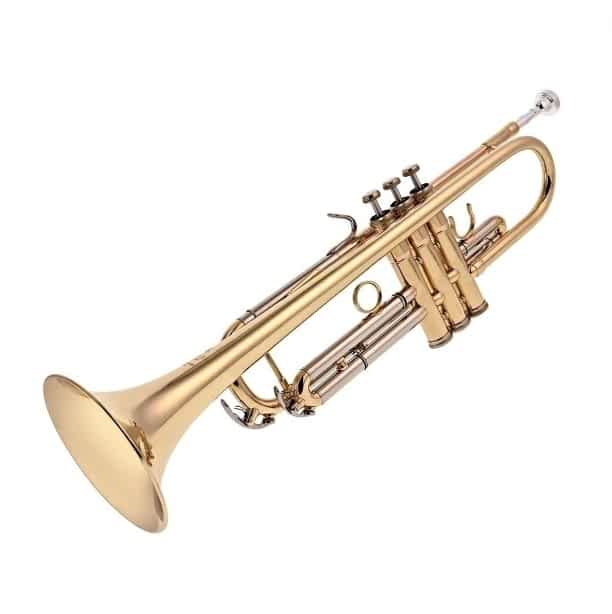
FEATURES:
1. The smaller valve block makes it
easier to grip the trumpet
2. The lead pipe is easy-blowing
and has fantastic tuning
OTHER INFO: Text
- Everything you need to get started is included
- Designed specifically with beginners in mind
- Slightly more expensive compared to other brands
When you click ‘Check Price’, you’ll see there are loads of great places to buy this item. Our personal favorite is Sweetwater for the US, and Thomann and Gear4Music for the UK & Europe.
They are the largest music retailers, with excellent customer service, competitive prices, really fast shipping, and the longest guarantees.
The professional musician who wrote this article combined many things,
from the product build, manufacturer’s reputation through to feedback
from other users, to create our famous TedScore™.
Yamaha YTR2330 Student Trumpet

FEATURES:
1. Durable construction made of yellow brass
2. The adjustable 3rd trigger
ring ensures a comfortable grip
OTHER INFO: Text
- Comes with a gig bag and mouthpiece
- Register and enjoy a 5-year extended warranty and 3-month Tomplay Premium
- May be too pricey for beginner players
When you click ‘Check Price’, you’ll see there are loads of great places to buy this item. Our personal favorite is Sweetwater for the US, and Thomann and Gear4Music for the UK & Europe.
They are the largest music retailers, with excellent customer service, competitive prices, really fast shipping, and the longest guarantees.
The professional musician who wrote this article combined many things,
from the product build, manufacturer’s reputation through to feedback
from other users, to create our famous TedScore™.
Trumpet Scales Finger Chart
Summary
Nailing that trumpet scales finger chart felt like unlocking a secret level in a video game when I was a kid, but boy, did it pay off.
Keep those fingers nimble and your breath steady—confidence is your co-pilot on this brass journey.
Imagine me, a youngster, cheeks puffed out, missing notes left and right in front of my band teachers—now I’m the one calling the tunes.
So, practice like a champ, laugh off the flubs, and toot your own horn—because soon, you’ll be the one setting the stage ablaze.
Wait, there’s more!!!
Ready to accessorize your trumpet like a rockstar?
Check out these 13 Must-have Trumpet Accessories!
FAQ's
A trumpet scale is read by playing the notes in ascending or descending order according to the key signature.
The notes for a trumpet scale depend on the key signature, but a common scale for a B-flat trumpet is B-flat, C, D, E-flat, F, G, and A. The eighth note would be another B-flat, one octave higher than the first high notes.











If learning scales was supposed to be fun, I think my trumpet didn’t get the memo. It’s been a battle, but this article is my new secret weapon. Watch out, scales, here I come with my backing tracks to conquer you!
idk y but i’m finding the c major scale so hard to get right…any tips?
I enjoyed reading your piece on trumpet scales, Cai Isfryn. It’s thorough and accessible. However, I’m curious about your methodology for teaching the B Major Scale Trumpet Fingering Chart. Do you start beginners on this immediately or introduce it after they’ve mastered other scales?
Just got my first trumpet and this guide is a lifesaver! The fingering chart is exactly what I needed. Thanks, Cai Isfryn, for making it seem less daunting. Practice here I come!
Lucky you, EllieM! I’m struggling to make a decent sound. Guess I need more practice. Hoping to get the hang of it like you.
EllieM, keep at it! The trumpet can be challenging at first, but it’s so rewarding. Cai Isfryn fingering charts are a great tool. Hit those scales daily!